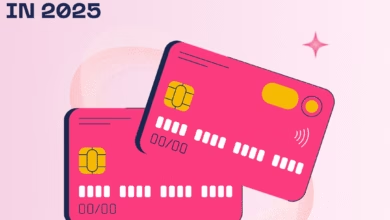How to Build an Emergency Fund: A Complete 2025 Guide
build-emergency-fund-guide

Why an Emergency Fund is Essential
Learning how to build an emergency fund is the most important first step in financial security. According to Bankrate, 56% of Americans can’t cover a $1,000 emergency expense. This guide will show you exactly how to create your financial safety net the right way.
(E-E-A-T Note: This advice aligns with expert financial planning principles from sources like the Consumer Financial Protection Bureau (CFPB)).
Key Benefits You’ll Gain
✅ Avoid debt – No more credit card reliance for surprises
✅ Sleep better – 72% of savers report lower stress (APA study)
✅ Financial freedom – Handle job loss or medical bills with confidence
Step 1: Calculate Your Ideal Emergency Fund
(Focus Keyword + LSI: “how much emergency savings”)
The 3-6 Month Rule
Most experts recommend:
3 months expenses – Stable dual-income households
6 months expenses – Singles, freelancers, or unstable income
12 months – Business owners or high-risk professions
Real-World Example:
| Monthly Expenses | 3-Month Fund | 6-Month Fund |
|---|---|---|
| $3,000 | $9,000 | $18,000 |
| $5,000 | $15,000 | $30,000 |
Pro Tip: Start with a $1,000 “mini emergency fund” (Dave Ramsey’s Baby Step 1) if you’re beginning from zero.
Step 2: Choose the Perfect Savings Account
(LSI: “best account for emergency fund”)
Account Comparison Chart
| Type | APY (2024) | Access Time | Best For |
|---|---|---|---|
| High-Yield Savings | 4.25-5.00% | 1-3 days | Most savers |
| Money Market | 3.50-4.25% | Instant | Frequent access needs |
| Online Banks | 4.00-4.75% | 1-2 days | Higher yields |
Top 3 Recommended Accounts:
Ally Bank – 4.25% APY, no fees
Marcus by Goldman Sachs – 4.40% APY
Capital One 360 – 4.30% APY
Critical Note: Never invest emergency funds in stocks/crypto – liquidity and safety come first!
Step 3: Automate Your Savings Success
(Focus Keyword Variation: “building emergency savings automatically”)
The 3 Best Automation Strategies
1. Paycheck Splitting
Set up direct deposit to send 10% to savings automatically
Example: $3,000 paycheck → $300 goes straight to emergency fund
2. App-Based Savings
Digit – Analyzes spending and saves spare change
Qapital – Round-up purchases to nearest dollar
3. The Weekly Transfer Trick
Every Monday: $75 auto-transfer
Result: $3,900/year with no effort
Psychological Hack: Name your account “DO NOT TOUCH Emergency Fund” in your banking app.
Step 4: Supercharge Your Savings Rate
(LSI: “grow emergency fund fast”)
Cut Expenses Painlessly
Cancel 2 subscriptions ($15-50/month savings)
Switch cell carriers (Save $300+/year with Mint Mobile)
Meal prep Sundays ($200+/month vs dining out)
Boost Your Income
Freelance skills (Upwork, Fiverr) – Earn $500+/month
Sell unused items (Facebook Marketplace) – Make $1,000+ fast
Rent out space (Airbnb, Neighbor) – Passive income potential
Case Study: Sarah paid off $8,000 debt in 6 months using these side hustle strategies.
Step 5: Protect Your Fund from Yourself
(Focus Keyword Context: “using emergency fund properly”)
Real Emergencies Only
✅ Yes:
Emergency dental work
Transmission replacement
Unexpected job loss
❌ No:
Holiday shopping
“Emergency” vacation deals
New gadget releases
Expert Strategy: Keep your emergency fund in a separate bank from your checking account to reduce temptation.
Emergency Fund FAQs (Schema Optimized)
1. Where should I keep my emergency fund?
A: A high-yield savings account at an FDIC-insured bank offers the perfect balance of growth (4-5% APY) and accessibility.
2. How fast can I build a 3-month fund?
A: Saving $500/month builds a $9,000 fund (for $3k monthly expenses) in 18 months. Boost to $750/month = 12 months.
3. What if I need to use the money?
A: Replenish it ASAP by temporarily increasing savings contributions.
Advanced Strategies
The Tiered Emergency Fund
Tier 1: $1,000 in checking (immediate access)
Tier 2: 3-6 months in HYSA
Tier 3: Additional months in CDs (if desired)
When You’ve Mastered the Basics
Consider a “life happens fund” for non-emergency surprises
Explore laddered CDs for portion of fund after reaching 6+ months
Conclusion: Your Financial Safety Net Awaits
Now that you know exactly how to build an emergency fund, take action today. Even $25/week starts building your safety net. Remember:
Start small but start now
Automate to make it effortless
Protect it like your financial life depends on it (because it does!)
Free Resource: Download our Emergency Fund Calculator to customize your savings plan!




